[ad_1]
This was the second most marginal Westminster constituency in Northern Ireland in 2019, with only 1,620 votes separating the winner, Chris Hazard (Sinn Féin) from the runner-up Michael Savage (SDLP). The seat has been in nationalist hands since 1987, firstly with the SDLP and since 2017 with Sinn Féin.
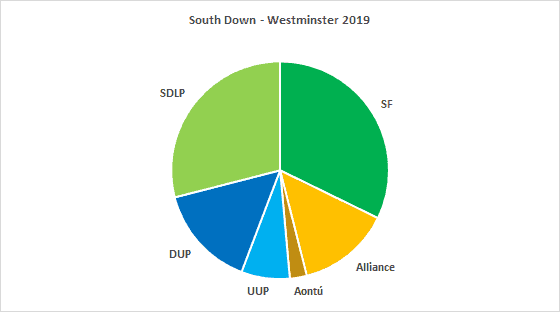

The changes made to the constituency boundaries last November were not substantial, although its electorate is now 9% smaller.
Candidates
Diane Forsythe, DUP
Chris Hazzard, Sinn Féin
Rosemary McGlone, Aontú
Colin McGrath, SDLP
Andrew McMurray, Alliance
Michael O’Loan, UUP
Declan Walsh, Green
Jim Wells, TUV
Hannah Westropp, Conservative
Candidates’ electoral history
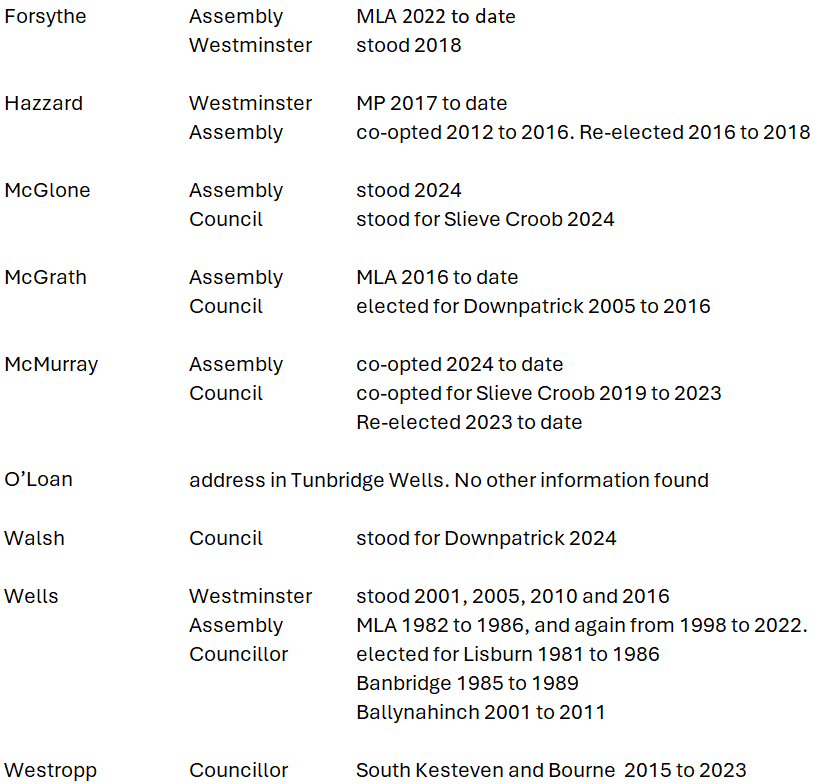



Vote shares by designation
There were no changes to the boundaries between 2010 and 2023.
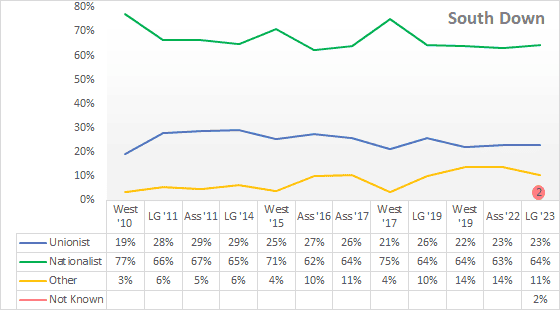

Please note that some Local Government electoral areas cross constituency boundaries which means that the LG figures have been estimated.
During this period the nationalist figure has trended down 7% points, and the unionists by 3%. Others has risen by 10%.
However, there is very clear evidence of cross designation tactical voting by both unionists and Others for the SDLP. We can see what happens when we remove the Westminster elections in the following chart.
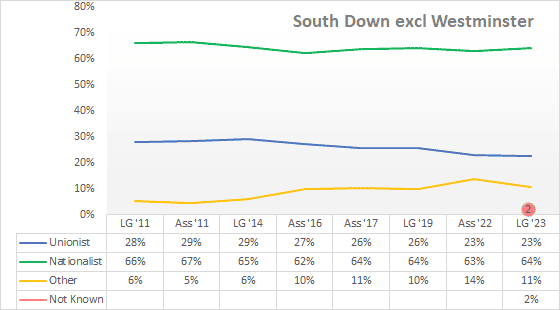

This is more revealing of the underlying situation. Nationalists have trended down 2% points, unionists 7%, while Others have grown 7% points. The Not Known in the last Council elections would not change any designations trends by more than 1% point if added to it.
Comparing the two graphs illustrates just how substantial the element of Westminster tactical voting has been in this constituency. The big unknown in the coming election is to what extent this will continue, or could it even increase, after Sinn Féin won last time round?
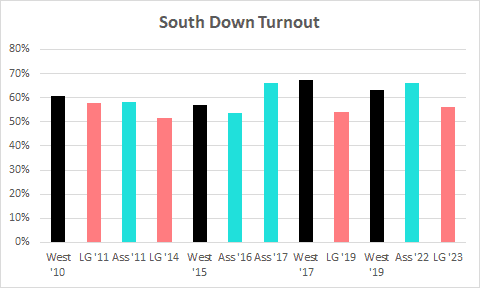

There is also plenty of room for one party or another to increase turnout in their favour, if they are capable of doing so.
Vote share by party in Assembly and Local Government Elections
With so much tactical voting in Westminster elections, changes in the underlying strength of the principal parties within the constituency can best be understood by looking at their performance in other elections.
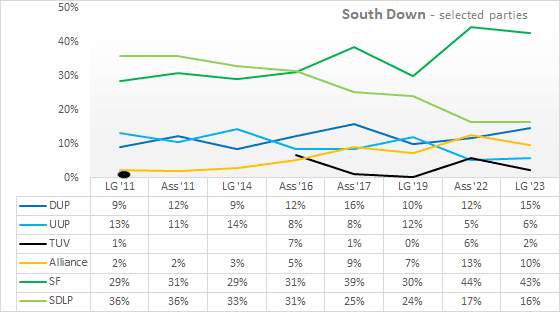

UKIP achieved 5 and 6% in the 2011 and 2014 elections but has not stood since. The Greens scored 3% in 2011 but have dropped below 1% since 2017. Aontú hit 2% in the Council election of 2019 and the 2022 Assembly but fell below 1% last year.
Independents of all stripes have featured. There has been an Independent Other presence at most elections, the highest point being 3% in 2016, and an Independent unionist once in 2019, again with 3%. Independent nationalists have stood at each Council election taking 2%, 3%, 8% and then 5% in 2023. This suggests some fluidity in nationalist party affiliation which has been more marked in the last few years, and which may still be in movement.
The SDLP have had a dreadful time over the period. Their trendline has fallen by 22% points, while Sinn Féin’s is up by 15. Alliance has grown 11%, the DUP by 4% and the TUV by 1%. Meanwhile the UUP has lost 7%.
Vote share in Westminster elections
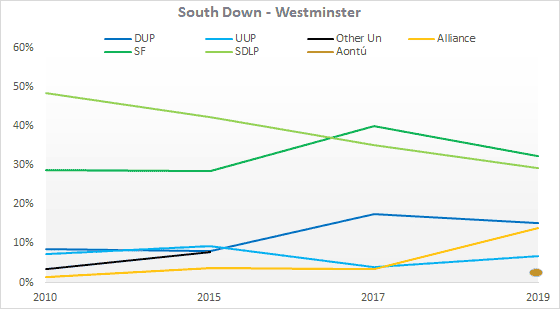

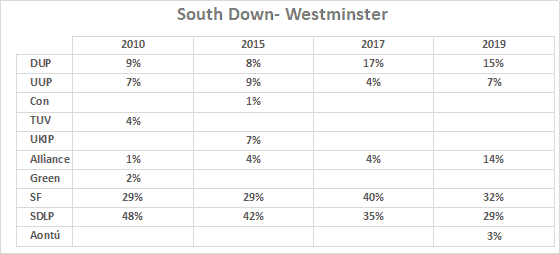

The ‘Other unionists’ shown on the chart were the TUV in 2010 and UKIP in 2015.
As is to be expected, tactical voting alters the trends. The SDLP is down 19% points, and Sinn Féin up by 7.
Alliance is up 11%.
This assisted the DUP trend, which rose 11% points helped by the absence of the TUV or UKIP from the last two contests. The UUP is down 2%.
The boundary changes
Calculating the effects of changes to constituency boundaries is not straightforward since there is no record of precisely how past votes for each party were distributed geographically. Necessarily this involves estimates and assumptions, and these may differ. For many years the UK media have all used the calculations provided by two academics, Rallings and Thrasher, to provide a notional result of how each constituency would have voted at the previous general election if the latest boundaries had been in force. For Northern Ireland their inputs are provided by Nicholas Whyte. These will be the base from which the media will report voting swings when constituency results are declared.
I used different assumptions for my own calculations of the notional vote which resulted in slightly different outcomes. In the following chart the Actual result in 2019 is compared with my estimate and the R&T estimate.
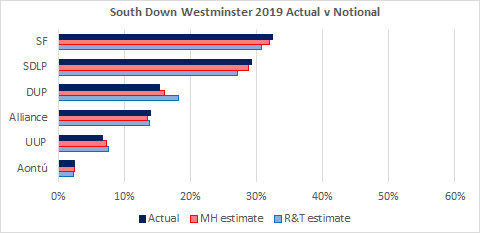

This gives only slightly different notional majorities for 2019.
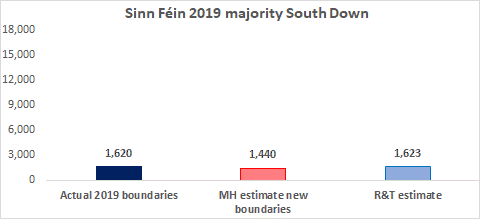

Resources
In addition to money, the other key resource for an election campaign is the level of constituency work running up to the campaign, and the manpower available in the campaign itself. When it comes to constituency work MP’s and MLA’s have the advantage of an allowance for constituency offices and for a staffing. The amount of staffing money is specified, but MP’s and MLA’s can choose to allocate it to fewer higher-paid staff or a higher number of lower-paid staff.
When it comes to manpower for canvassing and leafleting a party’s elected representatives normally form the core of the group available. Party’s may also choose to bring in helpers from neighbouring constituencies which they have no hope of winning.
The Index Total for each party gives some idea of the relative strength of each party locally.
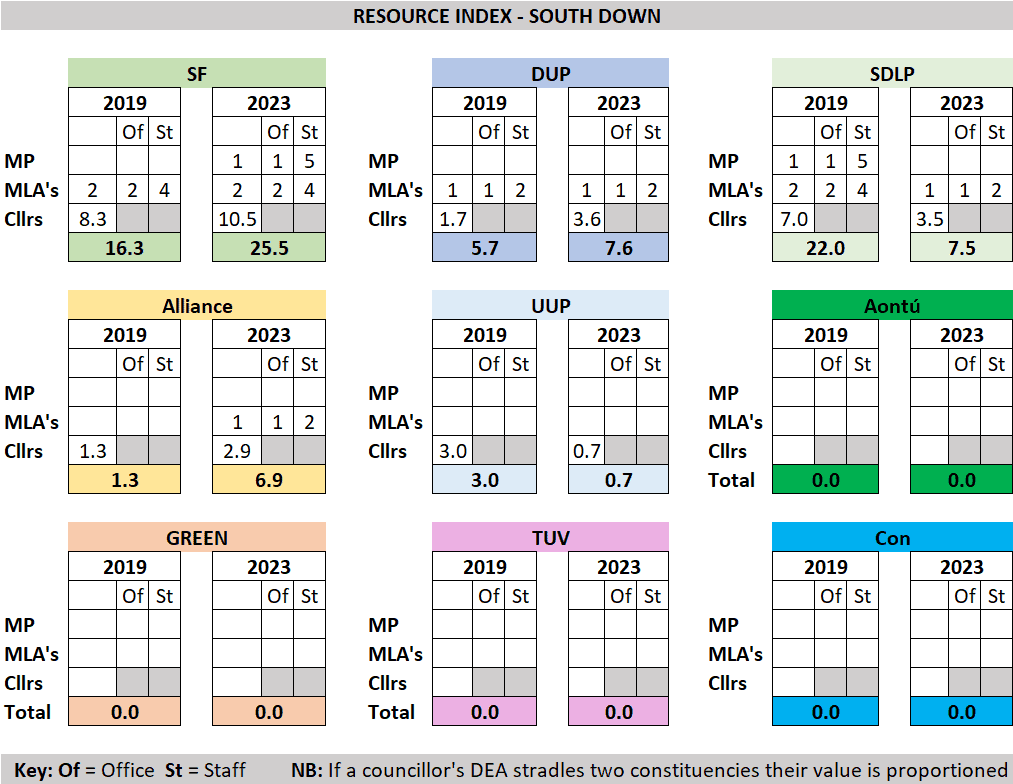

Several parties have entered this contest with little or nothing in terms of a local organisation.
Sinn Féin has a dominant party machine as a result of adding two Councillors, its capture of the Westminster seat, plus the SDLP’s disastrous loss of many elected representatives. In this election it looks as though the SDLP will be fighting up a steep hill against a well defended incumbent. This might turn out to be the decisive factor in the coming election.
The DUP has gained two Councillors at the expense of the UUP, which now maintains a toe-hold on elected representation through a Councillor whose district is not all within the constituency.
Alliance has gone from 1 to 3 Councillors and gained an MLA.
Factors possibly assisting Sinn Féin
3.3% points share ahead of the SDLP at the last election.
Dominance of local party machine.
Growth in share. The SF share in the 2022 Assembly and 2023 Council elections was 11% points higher than at the last Westminster election.
Factors possibly assisting the SDLP
Could SF’s victory in the last two elections prompt additional tactical votes to the SDLP from Others and unionists? If tactical voting returned to 2017 levels it could be worth up to 10% or 11% points added to the SDLP share. (Personally, I think anything like this level would be unlikely given the weakening in the SDLP electoral base and the strengthening in that of Alliance since then.)
Factors possibly harming the SDLP
Fall in base vote share. The SDLP Council share fell 8% points between 2019 and 2023.
Conclusion
While it is impossible to predict the result with absolute certainty, I think the balance of possibilities almost certainly points to a Sinn Féin victory.
Michael Hehir is a retired sales and marketing manager. He studied in Northern Ireland but now lives between England and Italy.
Discover more from Slugger O’Toole
Subscribe to get the latest posts to your email.
[ad_2]
Source link



